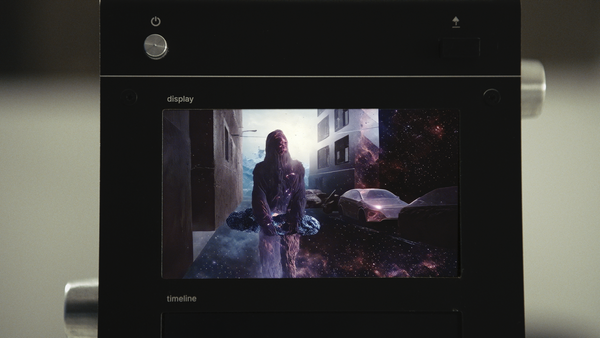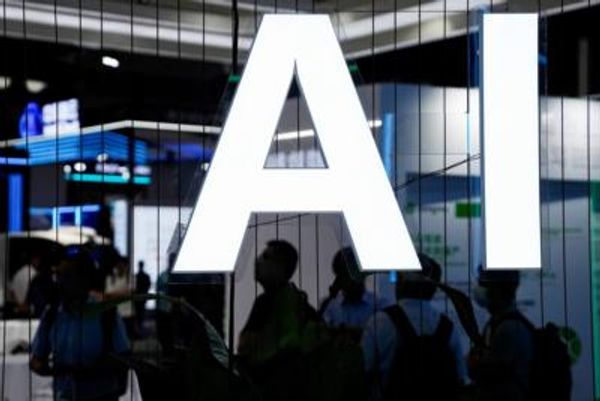
Two veterans of self-driving car companies are trying to make it big in Hollywood—not as actors, but as builders of the AI software on which the blockbuster movies of the future will be created.
They’ve launched a San Francisco-based startup called Odyssey that is competing with the likes of OpenAI, Runway, Kuaishou, and Metaphysic to provide tools for professional filmmakers and animators to create professional quality films using generative AI.
Today, Odyssey emerged from almost a year of operating in “stealth mode,” with $9 million in seed funding from GV (Google Ventures, the venture arm of Alphabet), with participation by DCVC, Air Street Capital, and more than a dozen individual early stage investors and angel investors.
The company’s AI software is in some ways similar to OpenAI’s Sora or Runway’s Gen 3, which turn a text description of a scene or sequence of shots into a short, high-quality, cinematic video.
Sora, which has only been released to a few initial test users so far but which OpenAI revealed in a splashy demo in February, has put Hollywood on edge. Film producer After seeing the Sora demo, Tyler Perry said he was putting plans for an $800 million film studio expansion in Atlanta on "indefinite hold" because Sora made him doubt whether traditional studios would have a place in the future.
Actor and tech investor Ashton Kutcher has said he is also convinced AI will soon allow anyone to create a film, without the need for actors, film crews, or big Hollywood budgets. In the past month, another text-to-video model called Kling, from Chinese AI company Kuaishou has also impressed AI developers.
Fine-grain control
But so far, these models only generate short video sequences of less than a minute, and they can't guarantee that characters and background will be depicted consistently throughout the sequence. Odyssey wants to offer filmmakers much more fine-grain control over the shots the AI model generates and provide for that consistency—as well as more realistic lighting and visual effects—and do so over much longer frame sequences than other AI models allow, according to Oliver Cameron, Odyssey’s CEO and one of its two cofounders.
Odyssey is designed as a “Hollywood-grade,” visual AI, intended to empower “the most maniacal creators in the world,” Cameron told Fortune. He gave the example of director James Cameron and his Avatar films, each of which took more than a decade to produce, involved hundreds of visual effects artists, and cost hundreds of millions of dollars. Odyssey wants to reduce that time and cost—down to perhaps a team of five spending $50,000 and working for six months—without sacrificing visual quality.
In order to make good on Odyssey’s vision of “Hollywood-grade” visual effects, Cameron says the software Odyssey is creating goes beyond a single text-to-video model. Instead, it is a family of models that specialize in four distinct tasks: generating three-dimensional graphic renderings, generating material effects, such as water or cloth, generating motion, and finally generating lighting effects. These models work together to produce the frames of the video. What’s more, the input for each of those models goes beyond text too, he says. It could include a human creator drawing with a stylus or still digital images.
This will allow filmmakers and professional visual effects artists—who are the intended users of Odyssey’s software—to have complete creative control over the final output, something that isn't possible with current text-to-video AI models.
Self-driving car veterans
Cameron and cofounder Jeff Hawke, who is Odyssey’s chief technology officer, both came out of the world of self-driving cars. Cameron had cofounded the self-driving car company Voyage, which was acquired by Cruise in 2021 for an undisclosed amount. He then served as Cruise’s vice president of product for two years. Hawke, meanwhile, had been part of the founding research and engineering team at Wayve, a British AI company building the software brains for self-driving cars that recently attracted $1 billion in investment from SoftBank, Nvidia, and Microsoft.
While the leap from self-driving cars to Tinsel Town might not seem obvious, Cameron says that at its heart, the software for self-driving cars is about AI software learning a three-dimensional world from two-dimensional inputs. The visual effects problem is essentially that in reverse—take a three-dimensional world and condense it into two-dimensional moving images.
At Wayve, Hawke had worked on an AI model, called GAIA, that the company had developed that can take an initial video frame and then use that to build an entire, realistic street-level video of a world that the model generates on the fly. Text prompts can also be used to shape what is being depicted in this simulated world. Wayve is using that technology to create synthetic data to train its self-driving decision-making AI software. But Hawke thought similar ideas could be used to make highly-quality shot sequences for movies.
Cameron says the other advantage of coming out of the self-driving car sector is that the two cofounders understand the importance of gathering their own real-world dataset to train their models.
Unlike other text-to-video companies that have relied on scraping the internet for video data to feed their AI software, Odyssey is gathering its own three-dimensional datasets in the real world and using that to feed its models. Cameron says there simply aren’t large enough three-dimensional datasets available on the internet to build AI models of the sufficient size and capability for what Odyssey wants to create. And his and Hawke’s experience in self-driving cars has given them some clever ideas about how to gather the real-world data Odyssey needs, although Cameron declines to say on-the-record what some of these methods are.
Odyssey plans to use the money from its seed round to expand its current staff of 13 full time employees and also to build bigger AI models, an expensive proposition requiring that the company have access to large clusters of graphics processing units, the type of computer chips most often used in AI applications.










